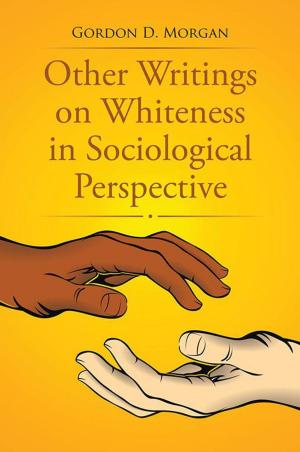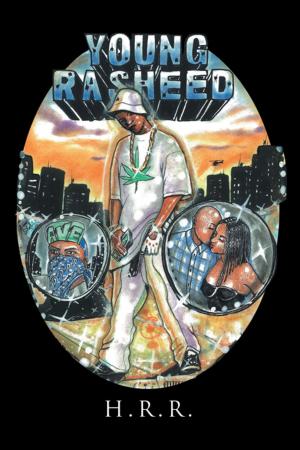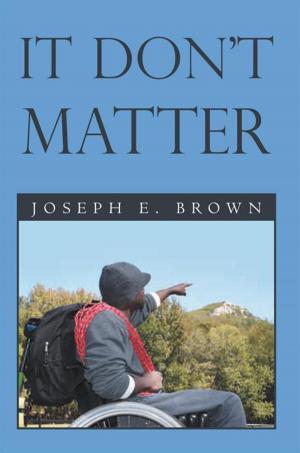Recovering A-New
A Culturally Competent Cognitive/Behavioral Treatment Model
Nonfiction, Health & Well Being, Self Help, Self Improvement, Stress Management| Author: | Dr. Ronald Beavers, Dr. Ronald Beavers PhD | ISBN: | 9781462892884 |
| Publisher: | Xlibris US | Publication: | June 29, 2011 |
| Imprint: | Xlibris US | Language: | English |
| Author: | Dr. Ronald Beavers, Dr. Ronald Beavers PhD |
| ISBN: | 9781462892884 |
| Publisher: | Xlibris US |
| Publication: | June 29, 2011 |
| Imprint: | Xlibris US |
| Language: | English |
Recovering A-NEW A Culturally Competent Cognitive/Behavioral Treatment Model (Ground Zero: The Urban War-Zone)
Authored By: Ronald Beavers, Ph.D.
Executive Summary
His Sheltering Arms-HSA provided an environment in South Central Los Angeles where crime and substance use has become a culture of its on, this is totally depleting the very fabric of life from the most wonderful citizens that have lived there starting at the end of WWII. Although demographics have changed somewhat that accommodates an ever increasing Latino population that just as most Blacks who had migrated after WWII all are seeking greater social and economic opportunities instead theres still much gentrification that plagues the area. We look at South of the Santa Monica (10) Freeway to Rosecrans Blvd. and then Alameda Corridor to the East and Western Ave. to the West this defines South Central Los Angeles where the heaviest influence of crime and substance use although there has been in the past several years has decreased it still posses as a major public health concern for young and old. May it be noted that the Alameda Corridor has the greatest re-entry prison population in the country; there are 40,000 low impact prisoners soon to be released in this catchment area alone, this model is designed to affectively inoculate the participants of the Recovering A-NEW with treatment, skills and tools for their family members as well that is premised on safety and productive living by incorporating culturally relevant AUTHENTIC behavior that creates a healthy family and community.
The Recovering A-NEW is a Culturally Competent Cognitive/Behavioral Treatment Model recognizes that there is a need to fill the void found in the standard references in the field of traumatology. The need is especially obvious in the area of assessing the response-set to trauma and its residual effects of Post-Traumatic Stress Disorder (PTSD). Because of the complexities that trauma clients present with sometimes its features, the clinician is confronted with many sub-sets and dynamics that can prove to be very challenging in providing the appropriate assessment and treatment plan. In the field of stress-disorder and its correlate to addiction, the conceptual, empirical, and psychological advances of the past three-decades have been references, compiled by practitioners, clinicians and researchers who have made the informed decisions concerning the assessment of trauma (Peterson, K.C., Prout, M.F., & Schwarz R.A., 1993). These affects, most of the time took on the secondary feature of addiction, in the individual using alcohol and/or illicit drugs to cope with the effects of trauma. It is the hope that this text will ultimately bring the practitioners the possibility of insight and understanding as they work to enable the healing process in victims of trauma.
When we examine measures of urban related traumatic events, i.e. murders, domestic violence, gangs and a host of other events that tend to comprise the mental/health care of those that live within the urban areas we see a strong correlation that is combat-related trauma that are described elsewhere in this Recovering A-NEW a Culturally Competent Cognitive Model. We also focus on scales that are suitable for studying civilian trauma in the clinical or community populations. The measurers described here are those that either have been significant to this field of trauma historically or appear quite promising for future research. In the past 20 years there has been a substantial and significant amount of literature aimed at providing a psychological characteristic of Post-Traumatic Stress Disorder (PTSD). Much of the literature is based on research that has used psycho-physiological measures and techniques to assess various features of the disorder as specified in the Diagnostic and Statistical Manual of Mental Disorder, fourth edition (DSM-IV; American Psychiatric Association,
Recovering A-NEW A Culturally Competent Cognitive/Behavioral Treatment Model (Ground Zero: The Urban War-Zone)
Authored By: Ronald Beavers, Ph.D.
Executive Summary
His Sheltering Arms-HSA provided an environment in South Central Los Angeles where crime and substance use has become a culture of its on, this is totally depleting the very fabric of life from the most wonderful citizens that have lived there starting at the end of WWII. Although demographics have changed somewhat that accommodates an ever increasing Latino population that just as most Blacks who had migrated after WWII all are seeking greater social and economic opportunities instead theres still much gentrification that plagues the area. We look at South of the Santa Monica (10) Freeway to Rosecrans Blvd. and then Alameda Corridor to the East and Western Ave. to the West this defines South Central Los Angeles where the heaviest influence of crime and substance use although there has been in the past several years has decreased it still posses as a major public health concern for young and old. May it be noted that the Alameda Corridor has the greatest re-entry prison population in the country; there are 40,000 low impact prisoners soon to be released in this catchment area alone, this model is designed to affectively inoculate the participants of the Recovering A-NEW with treatment, skills and tools for their family members as well that is premised on safety and productive living by incorporating culturally relevant AUTHENTIC behavior that creates a healthy family and community.
The Recovering A-NEW is a Culturally Competent Cognitive/Behavioral Treatment Model recognizes that there is a need to fill the void found in the standard references in the field of traumatology. The need is especially obvious in the area of assessing the response-set to trauma and its residual effects of Post-Traumatic Stress Disorder (PTSD). Because of the complexities that trauma clients present with sometimes its features, the clinician is confronted with many sub-sets and dynamics that can prove to be very challenging in providing the appropriate assessment and treatment plan. In the field of stress-disorder and its correlate to addiction, the conceptual, empirical, and psychological advances of the past three-decades have been references, compiled by practitioners, clinicians and researchers who have made the informed decisions concerning the assessment of trauma (Peterson, K.C., Prout, M.F., & Schwarz R.A., 1993). These affects, most of the time took on the secondary feature of addiction, in the individual using alcohol and/or illicit drugs to cope with the effects of trauma. It is the hope that this text will ultimately bring the practitioners the possibility of insight and understanding as they work to enable the healing process in victims of trauma.
When we examine measures of urban related traumatic events, i.e. murders, domestic violence, gangs and a host of other events that tend to comprise the mental/health care of those that live within the urban areas we see a strong correlation that is combat-related trauma that are described elsewhere in this Recovering A-NEW a Culturally Competent Cognitive Model. We also focus on scales that are suitable for studying civilian trauma in the clinical or community populations. The measurers described here are those that either have been significant to this field of trauma historically or appear quite promising for future research. In the past 20 years there has been a substantial and significant amount of literature aimed at providing a psychological characteristic of Post-Traumatic Stress Disorder (PTSD). Much of the literature is based on research that has used psycho-physiological measures and techniques to assess various features of the disorder as specified in the Diagnostic and Statistical Manual of Mental Disorder, fourth edition (DSM-IV; American Psychiatric Association,















